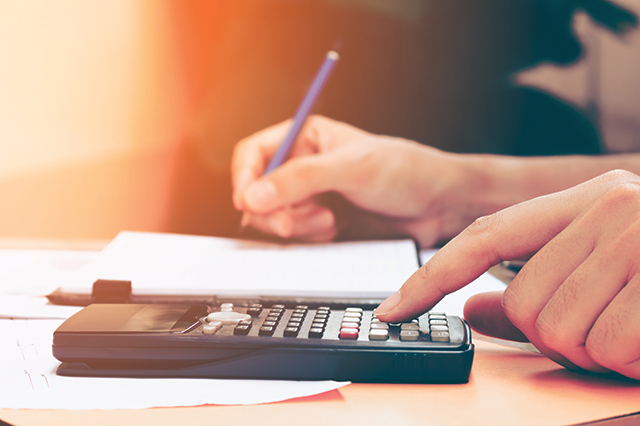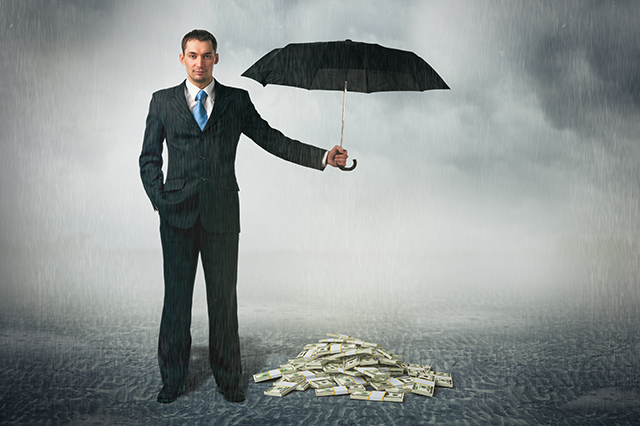In an ideal world the forecast would always be sunny. Unfortunately, rainy days are bound to happen, even if you hope for the best. You can’t predict a catastrophe, but you can be well-prepared by having a rainy day fund.
A rainy day fund is critical in times of financial crisis to cover unforeseen expenses and your everyday bills. If you should suffer an expensive personal setback of $500 to $1,500, do you have the money to bail yourself out without borrowing or using a credit card? There are countless emergencies that could pop up and strain your bank account such as car accidents, medical bills and home repairs. Learn how to build a rainy day fund to ensure that you have a financial safety net to weather an unexpected event.
Creating a Rainy Day Fund
Emergencies can put a serious dent in your lifestyle and budget. It’s clear that having money set aside is what we should do to be financially responsible. Of course, when you’re living paycheck-to-paycheck or paying off debt it can be difficult to even think about setting aside any cash. Even if you’re financially stable, what’s the purpose of a rainy day fund?
A rainy day fund is different than an emergency fund, although these terms are often used interchangeably. An emergency fund is another type of savings account that can be tapped should you lose your job or a large chunk of income. An emergency fund traditionally is a large safety cushion of $5,000 to $10,000, which could cover your everyday expenses for three to six months.
A rainy day fund is a smaller cash reserve that is used for one-time emergencies. You don’t have to be wealthy to create a rainy day fund. How much you need in that fund will vary per household. Financial experts recommend having anywhere from $500 to $3,000 in a rainy day fund. Set a goal that works for your budget.

Is Your Rainy Day Fund Enough?
Consider these possible scenarios and how you would pay for them. Your tooth has been killing you. You finally drag yourself to the dentist to find out that you need an emergency root canal and the deductible is $900. Would you have the cash out of pocket to cover it? What if you dropped a cup of coffee on your laptop and needed to replace it? Do you have $500 to $1,000 for a new Apple computer or PC?
Set a goal for yourself of how much you want to save. Then start reviewing your bills every month to see where you can save. Are you dining out and buying drinks every week? Do you have a cigarette or junk food habit? Cut down on expenses. Everything counts; even collecting the loose change you find in your bag, car and home. The secret to saving, especially if you have limited means, is to start small. Make a sandwich for lunch instead of ordering out. Set any money aside and put it into your rainy day fund.
Budgeting is particularly difficult during lean times, so take advantage of the moments when you have a sudden influx of cash. During times of economic upticks, people tend to spend more and save less. Do the opposite. Put aside money when you have added income like a bonus from work, a cash gift from a relative or tax return check. It’s easier not to miss money and stash it away for a rainy day when you’re enjoying a financial upswing.
If you don’t have much spare cash to save, consider finding a second job to bring in extra cash.
Storing Your Money
The envelope system may have worked for your grandparents. You, however, may want to stash your cash somewhere safe and separate from your checking account. Put your rainy day fund in a separate savings account or a government money market fund, where your money can earn compound interest and grow over time. Don’t make it easy to borrow from your rainy day fund, and open an account at a different bank than your checking account. Maybe even have a portion of your direct deposit go to your rainy day fund.
Start with small goals, storing away any extra cash you get. Eventually you’ll have a solid safety net. Having a rainy day fund prevents you from going into debt or using funds reserved for retirement. Plus it gives you peace of mind.
What are your best tips for saving money? Share them with the AAA community in the comments section below.
Learn all the ways AAA and Discover can help you save.
2 Thoughts on “Why You Should Have a Rainy Day Fund”
Leave A Comment
Comments are subject to moderation and may or may not be published at the editor’s discretion. Only comments that are relevant to the article and add value to the Your AAA community will be considered. Comments may be edited for clarity and length.


















Use coupons at the supermarket, walk a few blocks instead of public transportation, ride a bicycle, borrow a video from the library instead of Netflix. A little here, a little there, and it sure adds up.
So true! The library was my best friend when my daughter was little. Books, DVDs, puzzles – they have it all!
-Dana